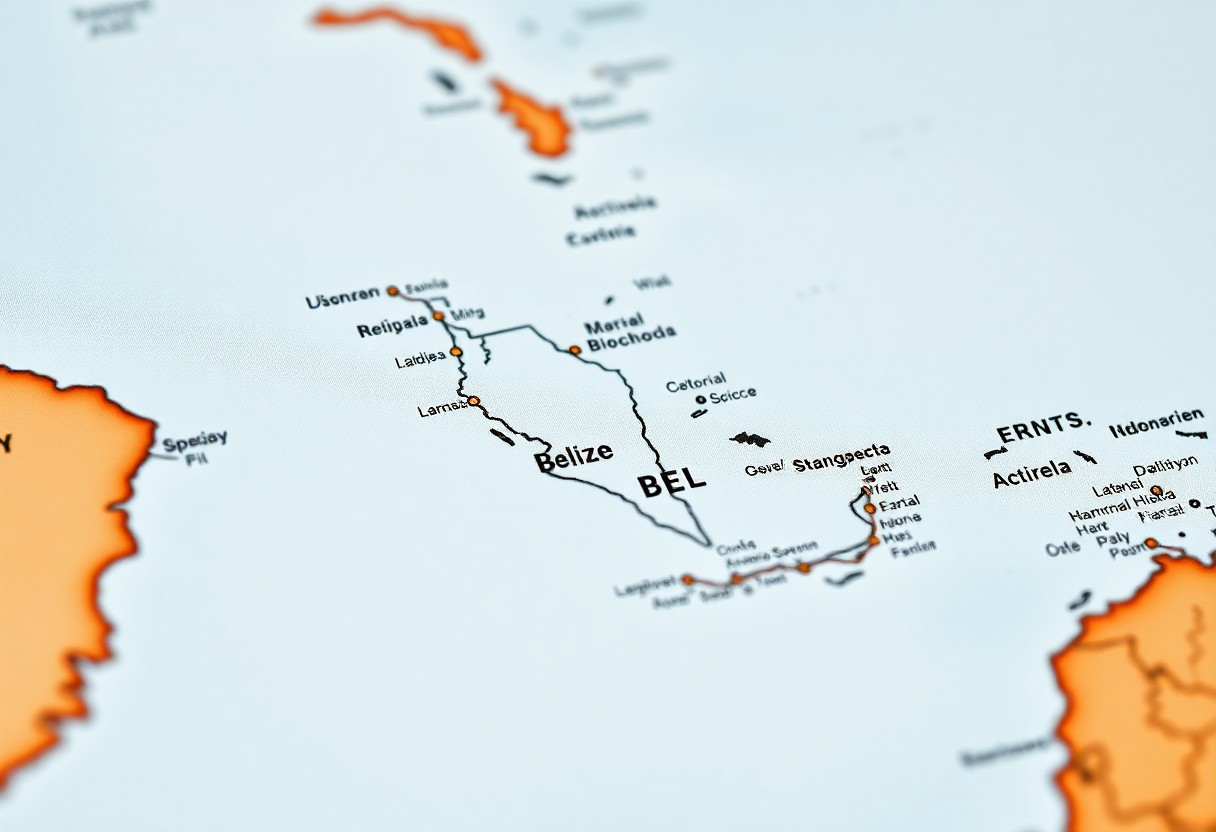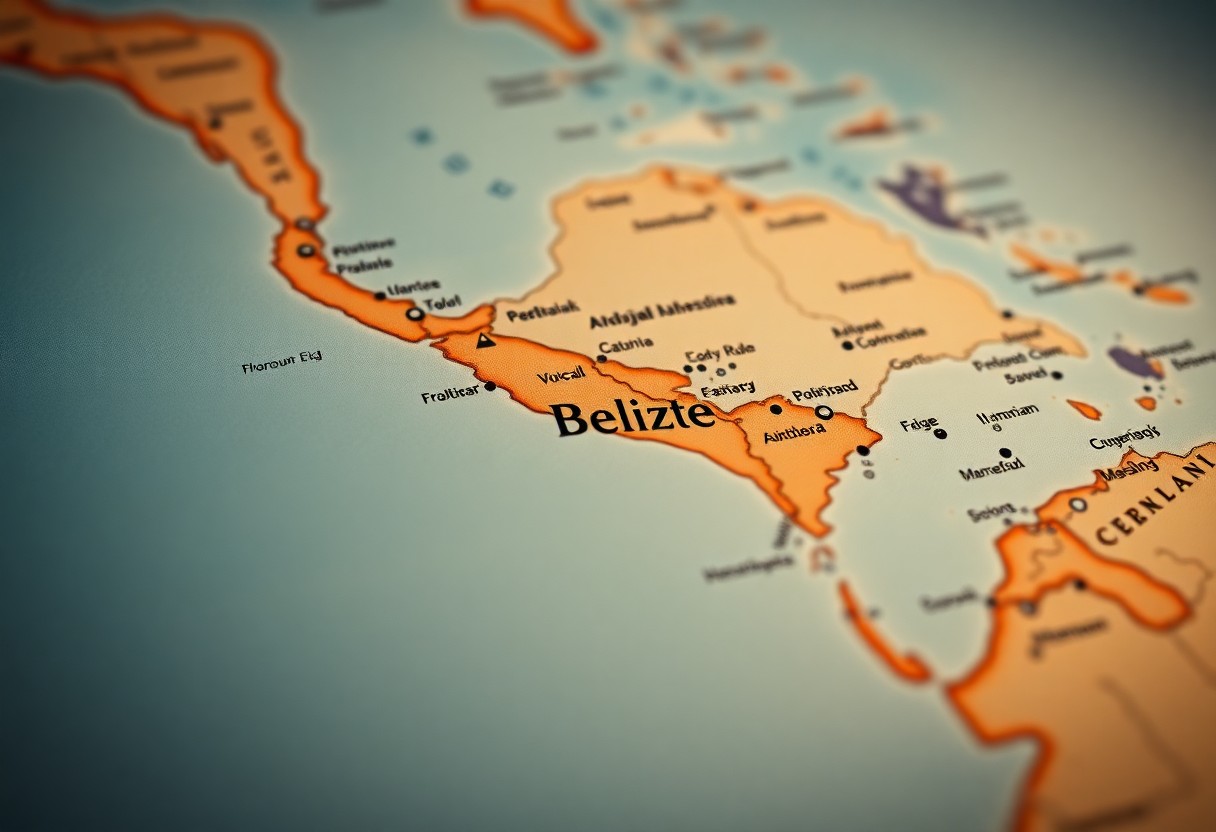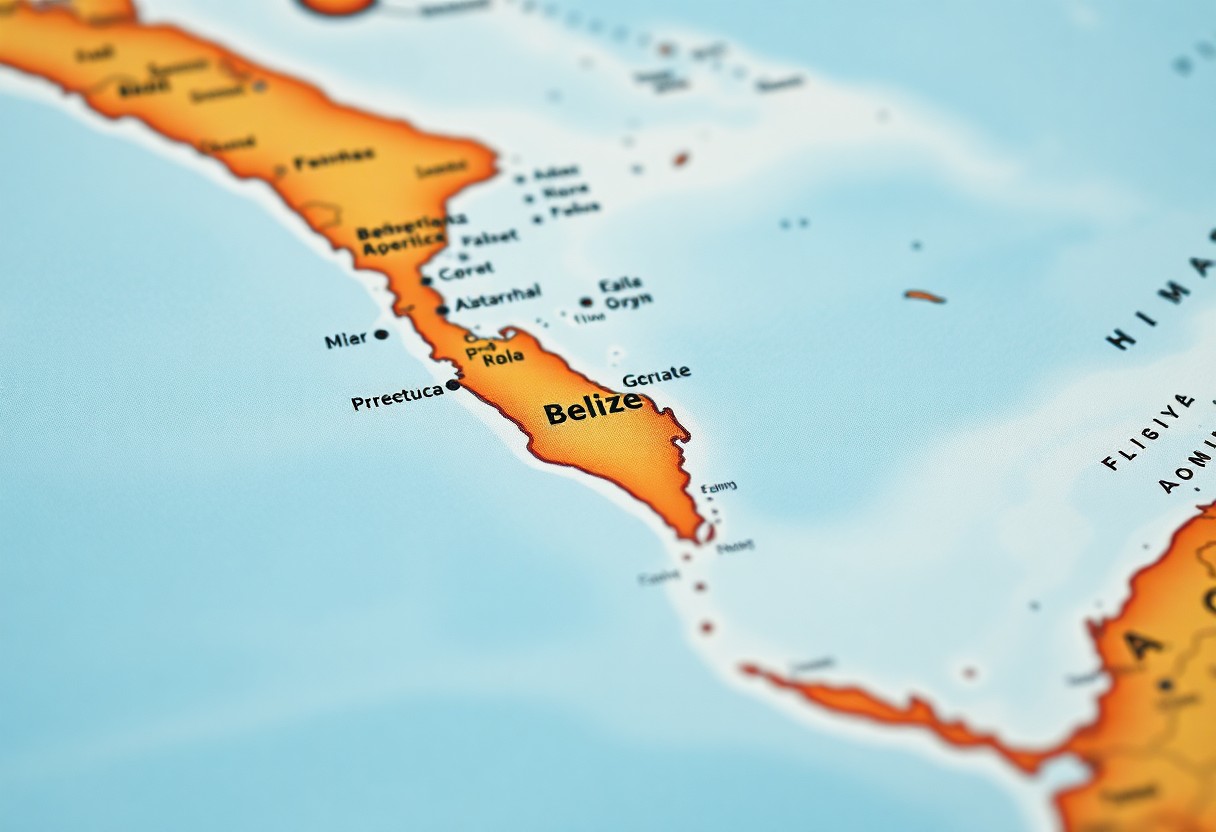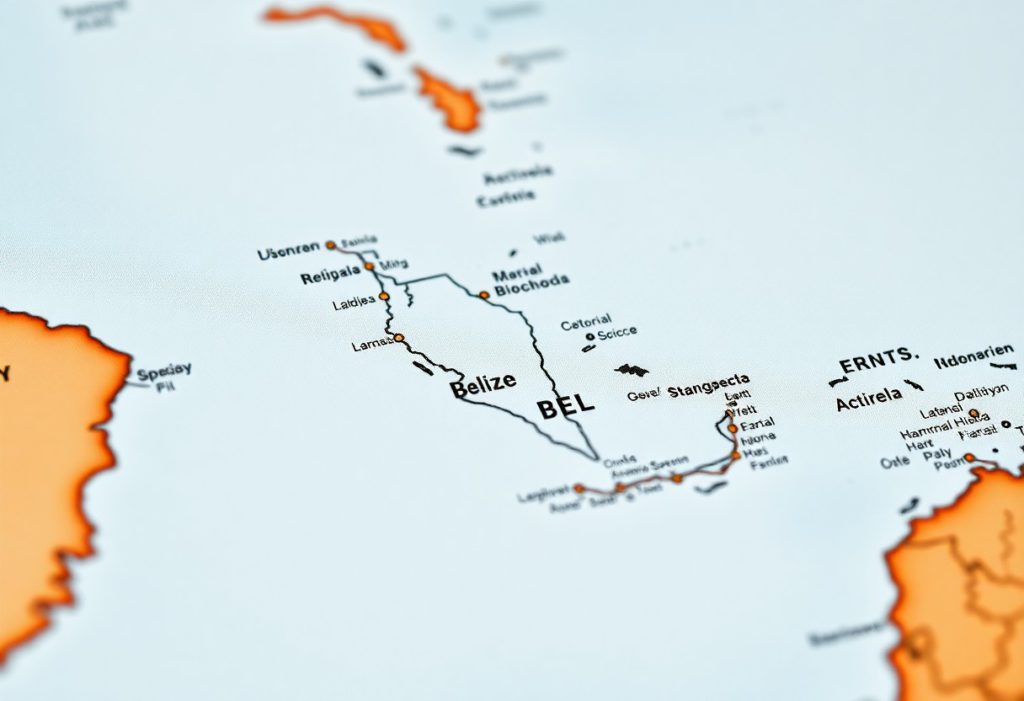The geographical enigma of Belize captivates many curious minds: where exactly is this intriguing nation situated? While some might mistakenly categorize it within a particular continent, the reality is far more complex. Belize is positioned in Central America, yet it undeniably rests on the North American continent, snugly nestled between Mexico and Guatemala. This dynamic tropical country shares its borders with the Caribbean Sea, offering an exceptional mix of geographical and cultural diversity that sets it apart from conventional continental assumptions. Understanding Belize's global positioning allows for a richer appreciation of its strategic and compelling location within the world.
 Here’s the text for your blog post:
Here’s the text for your blog post:
Discovering the Intricacies of Belize's Geographical Location
Belize’s geographic positioning often surprises many, as it is technically located in North America yet frequently associated with Central America due to its unique cultural and regional characteristics. This small but impactful nation occupies a distinctive area of the continent, seamlessly blending Caribbean and Latin American cultural influences that make its location exceptionally notable. The amalgamation of these diverse cultures not only enhances the nation's allure but also plays a vital role in shaping its identity and appeal, drawing visitors and researchers alike to its shores.
Exploring the Strategic Geographic Importance of Belize
Located just north of the equator on the eastern edge of Central America, Belize boasts a strategically significant position, bordered by Mexico to the north and Guatemala to the west and south. Spanning an area of approximately 22,970 square kilometers, Belize proudly holds the title of the second smallest country in Central America, featuring a stunning coastline that gracefully stretches along the Caribbean Sea. This geographical expanse promotes a variety of landscapes and ecosystems, significantly enriching the nation’s natural heritage and appealing to nature enthusiasts and tourists alike.
Understanding Belize's Border Dynamics with Neighboring Nations
Belize's borders are intricately defined by its neighboring countries, with Mexico demarcating its northern region and Guatemala outlining its western and southern boundaries. These borders extend approximately 250 kilometers with Mexico and around 266 kilometers with Guatemala. The complex relationships between Belize and these nations weave a rich tapestry of historical and cultural interactions. The border regions are often home to diverse ethnic communities, where shared histories and cultural exchanges have thrived despite occasional past tensions, creating a vibrant and dynamic social fabric.
Today, these border areas symbolize lively zones of cultural exchange and economic interaction, showcasing the rich multiculturalism that Belize embodies and celebrates.
Diving Deep into Belize’s Caribbean Connections
Exploring Belize’s geographical and cultural landscape unveils its profound ties to the Caribbean region. Although physically located in Central America, Belize boasts strong cultural, historical, and linguistic bonds with its Caribbean neighbors. The country’s British colonial heritage, combined with its predominantly English-speaking populace, aligns it more closely with Caribbean nations than with its Central American counterparts, enriching its unique cultural identity and enhancing its appeal to tourists seeking a multifaceted experience.
Celebrating Belize's Coastal Identity and Rich Marine Life
To truly appreciate Belize’s Caribbean essence, one must delve into its breathtaking coastline along the Caribbean Sea. As you traverse this area, you will encounter vibrant marine ecosystems, stunning coral reefs, and a maritime culture that encapsulates the essence of the Caribbean lifestyle. The coastal regions of Belize offer a remarkable fusion of natural beauty and cultural diversity, exemplifying what it genuinely means to embody a Caribbean character and lifestyle.
Belize's Active Role in CARICOM
At the heart of Belize’s Caribbean connections lies its membership in the Caribbean Community (CARICOM). This strategic alliance not only opens doors to economic, diplomatic, and cultural opportunities but also reinforces Belize’s regional identity and collaborative potential within the Caribbean landscape. Belize’s active participation in CARICOM transcends mere membership; it signifies a commitment to regional integration that yields substantial advantages.
This regional collaboration empowers Belize to engage in trade negotiations, secure diplomatic support, and promote cultural exchanges. By capitalizing on collective strengths, Belize enhances its international standing and amplifies its contributions to fellow Caribbean nations, establishing a robust platform for mutual growth and development that benefits all member states.
Dispelling Common Myths About Belize's Geographic Classification
A common misconception about Belize’s geographic classification can perplex even the most seasoned travelers. Many may wonder how this small nation fits into the broader continental landscape, especially given its unique position at the nexus of Central America and the Caribbean region.
Clarifying Common Geographic Misunderstandings
A frequent misunderstanding is the belief that Belize can be neatly categorized into a single geographic classification. Its complex location defies traditional continental boundaries, as it occupies a captivating crossroads that challenges simplistic categorization. Gaining insight into Belize’s geographical positioning reveals a more intricate narrative than many initially perceive, highlighting its unique role in the regional and global context.
Recognizing Belize's Distinct Cultural Identity
Given its proximity to Mexico and Guatemala, one might easily conflate Belize’s geographic identity with that of its neighbors. However, the country’s unique cultural and linguistic characteristics, highlighted in various aspects, distinctly set it apart within the Central American landscape. Belize is not merely a geographical curiosity; its strategic position serves as a vital bridge between North and Central America, making it a compelling study of geographic complexity.
Belize’s location significantly impacts its culture, history, and international relationships, creating a rich tapestry of geographic and cultural significance that transcends simple continental classification, offering insights into the nation’s unique identity.

Unlocking Travel Opportunities from Belize's Unique Position
Contrary to many travelers’ assumptions, Belize’s distinctive geographical position unlocks remarkable travel opportunities across multiple regions. Its location at the intersection of North and Central America offers diverse and accessible travel experiences. This geographic positioning facilitates seamless exploration of neighboring countries, providing a gateway to both Caribbean and Central American cultures, thereby enriching any travel itinerary.
Convenient Accessibility for North American Travelers
Situated just south of the United States, Belize offers convenient and relatively short travel distances for those hailing from North America. Travelers can expect direct flights from major cities that typically range between 2-4 hours, making it an attractive tropical escape. Depending on your departure city, particularly from southern U.S. locations, you may discover even more efficient routes to this beautiful destination, enhancing the appeal for spontaneous travelers.
Exploring Various Travel Options: Flights and Cruises
Among the most favored methods to reach Belize are international flights and cruise ship arrivals. Numerous airlines offer direct routes from major North American hubs, including renowned carriers such as United, American, and Delta, ensuring regular connections to Belize City’s Philip S. W. Goldson International Airport. This broad spectrum of options caters to diverse travel preferences, making Belize an accessible destination for all types of travelers.
Additionally, your travel options extend beyond conventional flights. Cruise ships frequently dock at Belize City’s port, providing an alternative maritime route to experience the country. Various cruise lines include Belize in their itineraries, allowing travelers to explore coastal regions and enjoy organized shore excursions. These cruises offer a captivating glimpse into Belize’s stunning Caribbean coastline and its rich cultural diversity, making them an appealing option for travelers seeking a leisurely and immersive travel experience.
Here’s the text for your blog post sections:
Delving into Belize's Rich Cultural Landscape
Belize presents a captivating cultural landscape that resists simplistic categorization. You will find a rich tapestry of influences that blend Caribbean, Central American, and indigenous traditions into a unique national identity. The country’s multiethnic heritage distinctly defines its social fabric, with diverse groups such as Creole, Garifuna, Maya, and Mestizo populations contributing to its vibrant cultural mosaic, creating a culture that is both complex and beautiful.
How Geography Shapes Belize's Cultural Identity
Belize’s unique position at the intersection of the Caribbean Sea and the Central American mainland profoundly influences its cultural development. You will observe how coastal landscapes and tropical environments shape traditional practices, economic activities, and social interactions. The maritime traditions and adaptations to agriculture reflect the unique geographical positioning of Belize, showcasing the intricate relationship between geography and culture.
The Diverse Demographics and Cultural Heritage of Belize
One of Belize’s most striking features is its remarkably diverse population. You will discover that the population is composed of multiple ethnic groups, each contributing distinctive cultural elements to the national identity. The demographic composition mirrors historical migrations, colonial interactions, and indigenous roots, creating a complex cultural landscape rich in history.
Moreover, Belize’s intricate social dynamics are noteworthy. Approximately 50% of the population is mestizo, complemented by substantial Creole, Maya, and Garifuna communities. Despite its small population of around 400,000, Belize represents an extraordinary blend of linguistic and cultural diversity. English serves as the official language, facilitating communication across various ethnic groups and fostering a unifying national identity that is both cohesive and celebratory.
 Here’s the text for the blog post sections:
Here’s the text for the blog post sections:
Comprehensive Economic Overview of Belize
Belize’s economy is a reflection of its unique geographical positioning in various ways. As a small nation with Caribbean coastlines, it boasts an economic structure that is both diverse and adaptable. The country capitalizes on its strategic location to develop sectors such as tourism, agriculture, and offshore services, establishing a resilient economic framework that harmonizes traditional industries with modern opportunities, fostering sustainable growth.
Strengthening Trade Relations and Economic Ties with Neighboring Nations
In the context of regional dynamics, Belize upholds vital trade connections with its neighboring countries. Strong economic ties with Mexico and Guatemala are facilitated by bilateral agreements, promoting cross-border commerce. Understanding these relationships is essential for grasping Belize’s economic interdependence and regional economic strategies, highlighting the importance of collaboration in fostering growth and stability.
The Geographical Influence on Belize's Industries
Belize’s geography significantly shapes its industrial development. You will notice how coastal regions drive maritime industries, while inland areas support agriculture and forestry sectors. The diverse terrain creates unique economic opportunities that mold the nation’s productive capabilities and industrial landscape.
This geographical diversity fosters a multifaceted economic environment. The coastal ecosystems support fishing and marine-related industries, while tropical forests sustain sustainable timber and agricultural production. Additionally, the potential risks of climate change also influence industrial strategies, prompting sectors to adopt more resilient and adaptive economic models to safeguard against environmental challenges.
Here’s the paragraph:
Key Insights on Belize's Geographic Identity
Ultimately, you may find it intriguing that Belize occupies a unique geographical position, located in Central America, which is officially part of the North American continent. Understanding Belize’s global positioning reveals its strategic role as a bridge between the North and South American regions. As you explore this remarkable country, you will gain insight into its complex continental identity, positioned on the southeastern edge of the North American landmass and adjacent to the Caribbean Sea. This geographical nuance makes Belize a distinctive destination that defies simple continental categorization, offering an enriching blend of cultural and geographical diversity.
Here’s a detailed FAQ about Belize’s geographical position:
Frequently Asked Questions About Belize's Geography
Q: Is Belize located in North America or Central America?
A: Belize is geographically positioned in Central America, which is technically part of North America. It is situated on the northeastern coast of Central America, sharing borders with Mexico to the north and Guatemala to the west and south. While some geographers consider Central America a distinct subcontinent, it is officially recognized as part of the North American continent.
Q: What are Belize’s geographical coordinates and unique regional characteristics?
A: Belize is located between approximately 15.8° and 18.5° north latitude and 87.5° and 89.2° west longitude. The country showcases a diverse landscape that includes tropical rainforests, coastal plains, and a coastline along the Caribbean Sea. Its unique geographical position situates it within the Central American region while maintaining distinct geographical and cultural characteristics that define its unique identity.
Q: How does Belize’s location influence its cultural and historical development?
A: Belize’s geographical position has profoundly impacted its cultural diversity and historical development. Serving as a bridge between North and South America, it has been influenced by the Mayan civilization, European colonization, and Caribbean elements. Its location has facilitated trade, migration, and cultural exchanges, resulting in a rich, multicultural society that embraces Creole, Garifuna, Maya, and mestizo populations, creating a vibrant cultural milieu.
The Article Which Continent Is Belize On? Understanding Its Global Position appeared first on Belize Travel Guide
The Article Belize’s Global Position: Which Continent Is It On? Was Found On https://limitsofstrategy.com



Ah, the geographical maze of Belize! It’s like that one puzzle piece that doesn’t quite fit anywhere but somehow makes the picture more interesting. I’ve always found it amusing that Belize manages to straddle two worlds—labeled North American on a map but dancing to the rhythm of Central American culture. It’s like a geographical identity crisis worth celebrating!
You’ve captured something really special about Belize. It’s fascinating how this small country can embody such a mix of influences and patterns. The blend of North American geography with Central American culture creates a unique tapestry that shines through its people, food, and traditions.
“Absolutely! Belize’s unique blend of cultures truly makes it a captivating destination. If you’re curious to explore more about this vibrant gem, check out this link for a deeper dive!”
https://beautifulbarry.co.uk/ChocolateHealth
You’ve captured the essence of Belize beautifully. It really does sit at a crossroads, with its British colonial past and rich Mayan heritage creating a unique cultural tapestry. This blend gives Belize an identity that feels authentic yet distinct, making it a fascinating place to explore.
You make some excellent points about Belize and its unique cultural tapestry. The intersection of its British colonial past with the remnants of Mayan civilization is fascinating and adds layers to the country’s identity. It’s not just a meeting of two histories; it’s an ongoing dialogue that continues to shape how Belizeans see themselves today.
You really captured the essence of Belize’s identity beautifully. The interplay between the British colonial influence and the rich Mayan heritage indeed creates a complex narrative that influences everything from local traditions to contemporary viewpoints. It’s fascinating how this blend is evident not just in architecture or language, but also in everyday life, like in the cuisine or the way holidays are celebrated.
Ah, the delightful conundrum of Belize! A land that makes geographical traditionalists scratch their heads while simultaneously causing avid travelers to hold back a joyous squeal. It’s like Belize has taken a page from the playbook of the great philosophers: “I think, therefore I am… located in a geographical puzzle.” I mean, who wouldn’t want their nation’s sense of identity to be defined by such an epic debate between continents?
It’s true, Belize really does challenge the conventions of geography in such an intriguing way. That blend of cultures and ecosystems feels almost like a metaphor for its identity—uniquely Caribbean yet woven into Central America’s rich tapestry. It’s fascinating how it has become a discussion point for travelers and scholars alike, highlighting the nuances of identity and belonging in a globalized world.
You’ve hit the nail on the head there. Belize really does dance to its own rhythm when it comes to geography. I mean, how often do you find a place that treats cultural fusion like it’s a friendly potluck? “Hey, Jamaica, come bring your reggae vibes, and Guatemala, don’t forget that delicious tamale recipe!” The result is this delightful mosaic that makes you raise an eyebrow and nod in appreciation.
You raise an interesting point about how the blend of cultures and ecosystems in Belize mirrors its identity. It’s a living example of how borders can feel fluid, much like the coastal tides that shape its landscapes. On one hand, there’s this alluring Caribbean vibe, with vibrant traditions and languages, and on the other hand, it’s anchored in Central America’s history and geography.
“Explore the vibrant blend of cultures and stunning ecosystems in Belize—discover more about this unique destination here!”
https://beautifulbarry.co.uk/ChocolateHealth
You’ve captured Belize’s dual identity quite well, blending cultural and ecological variety. However, that mix isn’t just a backdrop for a conversation about identity; it’s a living, evolving tapestry, shaped by historical tides and modern pressures.
“Discover the magic of Belize for yourself—explore its vibrant cultures and breathtaking landscapes through our curated travel guide!”
https://beautifulbarry.co.uk/eComToolkit
Belize really does spark some intriguing discussions, doesn’t it? You’re spot on about the geographical paradox that seems to swirl around this small but vibrant nation. It’s not just about its physical location—caught between Central America and the Caribbean—but also about how that blends cultures and influences in a way that’s truly unique.